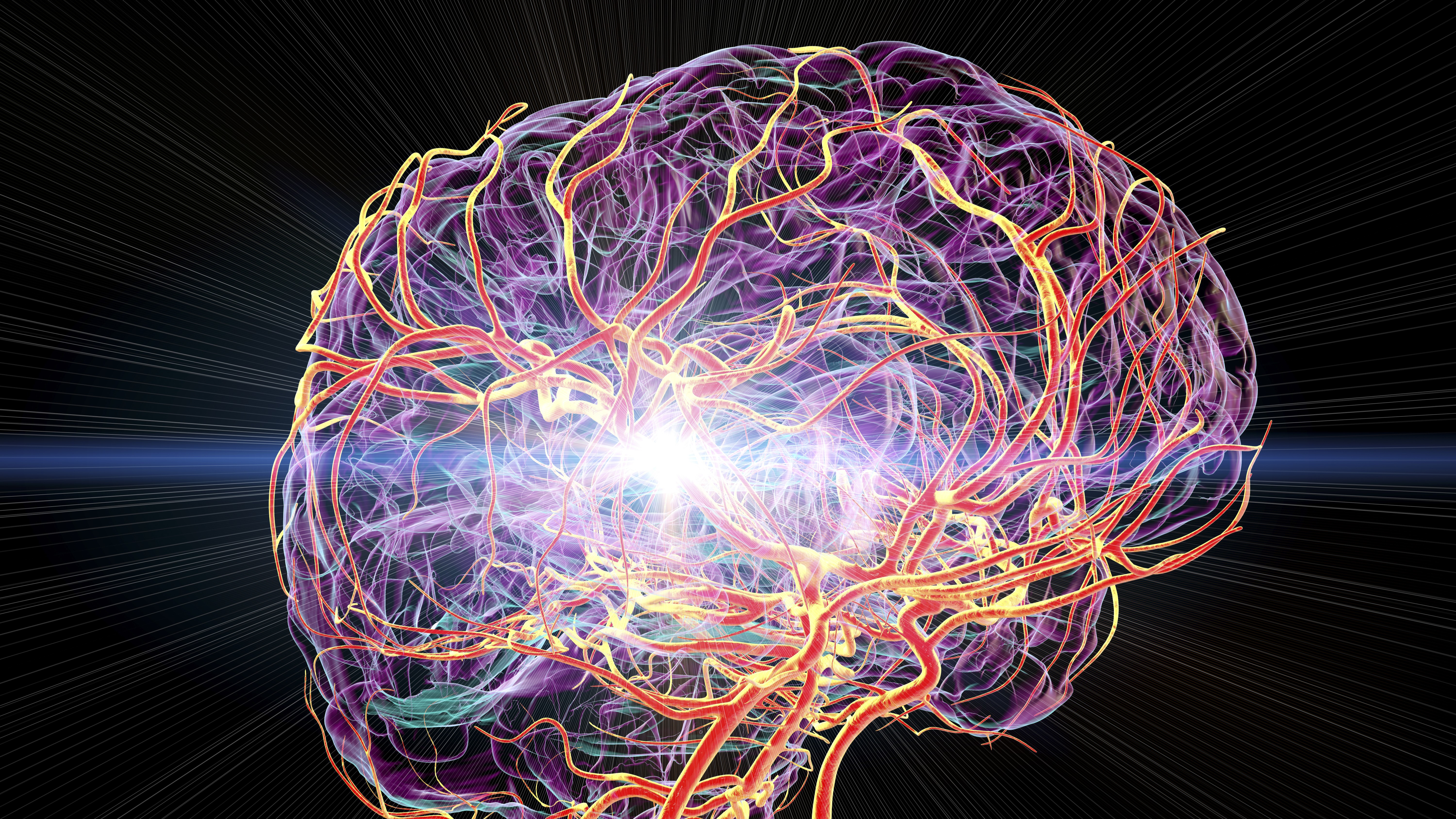Mysterious migraines after heart surgery may finally be explained
Short-lived lesions sometimes appear in the brain following heart surgery — and now, a new trial hints that they might be linked to migraines and visual auras. More work is needed to know if they signal more serious risks, like stroke.

After a common heart surgery, some patients experience migraines with visual auras — temporary vision disturbances, such as flashing lights and zigzag lines. The reason for this unusual complication was a mystery, but now, research hints that blood clots in the brain may be the culprit.
"These [clots] have previously not been thought to result in any symptoms or to have any clear adverse consequences," study co-author Dr. Gregory Marcus, a cardiologist at the University of California, San Francisco, told Live Science in an email.
The new study, published July 7 in the journal Heart Rhythm, proposes a new theory about why these mysterious migraines manifest.
A sign of something serious?
To treat arrhythmias, or irregular heartbeats, doctors perform a catheter ablation, which involves inserting a tube into the heart to burn or scar any heart tissue driving the irregularity. About 360,000 people in the U.S. undergo the surgery each year.
Different catheter ablation techniques can be used depending on the location of the faulty heart tissue. One strategy, called "transseptal puncture," creates an opening between two heart chambers, whereas another, known as the "retrograde approach," doesn't require this hole to be made.
But in the months following a catheter ablation, 2.3% of patients with no history of migraines with visual auras report these symptoms for the first time. The auras themselves typically appear just before or during a migraine attack.
These new symptoms are concerning because ischemic stroke, which occurs when blood flow to the brain is blocked, is 2.6 times more likely in people under 45 who experience migraines with visual auras, and it's 3.7 times more likely in women of that same age group who experience them. So these migraines could be harbingers of serious cardiovascular events.
Get the world’s most fascinating discoveries delivered straight to your inbox.
Mysterious origin of visual auras
Scientists have several theories as to why catheter ablation might be linked to migraine. One theory posits that the hole created by transseptal puncture might trigger the complication by rerouting blood from its typical path.
Blood normally circulates from the right side of the heart to the lungs, then to the left side of the heart, and finally to the rest of the body, including the brain. However, a puncture could allow blood to travel directly from the left to the right heart chambers, bypassing the lungs. Researchers think this detour could allow some type of neurotoxin — normally broken down by lung enzymes — to reach the brain and trigger auras.
However, MRI scans have revealed an alternative visual-aura trigger: brain lesions caused by emboli, meaning bits of blood clots, air bubbles or fatty deposits that travel through the bloodstream and then obstruct blood vessels in the brain.
Migraines with visual auras also occur in people without a history of heart surgery, but the mechanism behind the phenomenon is unclear in those scenarios, as well. Marcus said that previous studies have found that people who experience these auras, in general, tend to also have a history of brain emboli.
"But it has been very difficult to determine if there was a causal relationship between the two," he said. Since brain emboli tend to be ephemeral, clinicians would have to conduct scans around the same time that the patient reports the auras to spot a link, he said.
Patients undergoing catheter ablation may present a chance to explore the connection, because the surgeries can cause more emboli to appear. Debris from the burnt heart tissue can travel to the brain, block blood flow, and thus starve the brain tissue of oxygen and nutrients, Marcus said. These lesions are temporary, but he and his team suspected that the emboli may be linked to the auras following heart surgery.
So they conducted a trial in which 63 arrhythmia patients were treated with the transseptal puncture and 57 with the retrograde approach. The patients underwent brain MRI scans the following day and completed a questionnaire one month later to report any visual auras. It turned out both surgical techniques were equally likely to result in visual auras.
"Our findings here show that the presence of a hole that provides communication between the right and left sides of the heart is not at all necessary for these visual auras to occur," Marcus said. Yet, looking at the MRI scans, they found that patients with brain emboli after surgery had a 12 times higher chance of developing visual auras than patients without emboli did.
Next steps
Once thought to produce no symptoms, brain emboli may at least partly contribute to visual auras, Marcus said, adding that scientists should explore if the emboli are also linked to more serious problems, like stroke.
The new study has some weaknesses, though. Dr. Andrew Lee, an ophthalmologist at Houston Methodist Hospital in Texas who was not involved with the work, noted that "the main limitations were that the migraine symptoms were self-reported." It's possible that "even a validated and prospectively obtained questionnaire might misclassify a given participant's symptoms," Lee told Live Science in an email.
He also noted that the study did not assess whether any patients had a naturally occurring hole in their heart, called a patent foramen ovale. This hole between heart chambers forms during development and closes shortly after birth in most people, but in 25% of people, it stays open. The hole has been linked to migraines, visual auras and strokes when present in adults.
Since the new study only explored whether brain lesions were linked to visual auras immediately following heart surgery, "future work is necessary to determine if the results of this study are generalizable to migraine in general," Lee said.
Editor's note: Dr. Gregory Marcus consults for and owns equity in InCarda, a drug delivery company aimed at treating cardiovascular diseases including arrhythmia.
This article is for informational purposes only and is not meant to offer medical advice.

Kamal Nahas is a freelance contributor based in Oxford, U.K. His work has appeared in New Scientist, Science and The Scientist, among other outlets, and he mainly covers research on evolution, health and technology. He holds a PhD in pathology from the University of Cambridge and a master's degree in immunology from the University of Oxford. He currently works as a microscopist at the Diamond Light Source, the U.K.'s synchrotron. When he's not writing, you can find him hunting for fossils on the Jurassic Coast.
You must confirm your public display name before commenting
Please logout and then login again, you will then be prompted to enter your display name.
